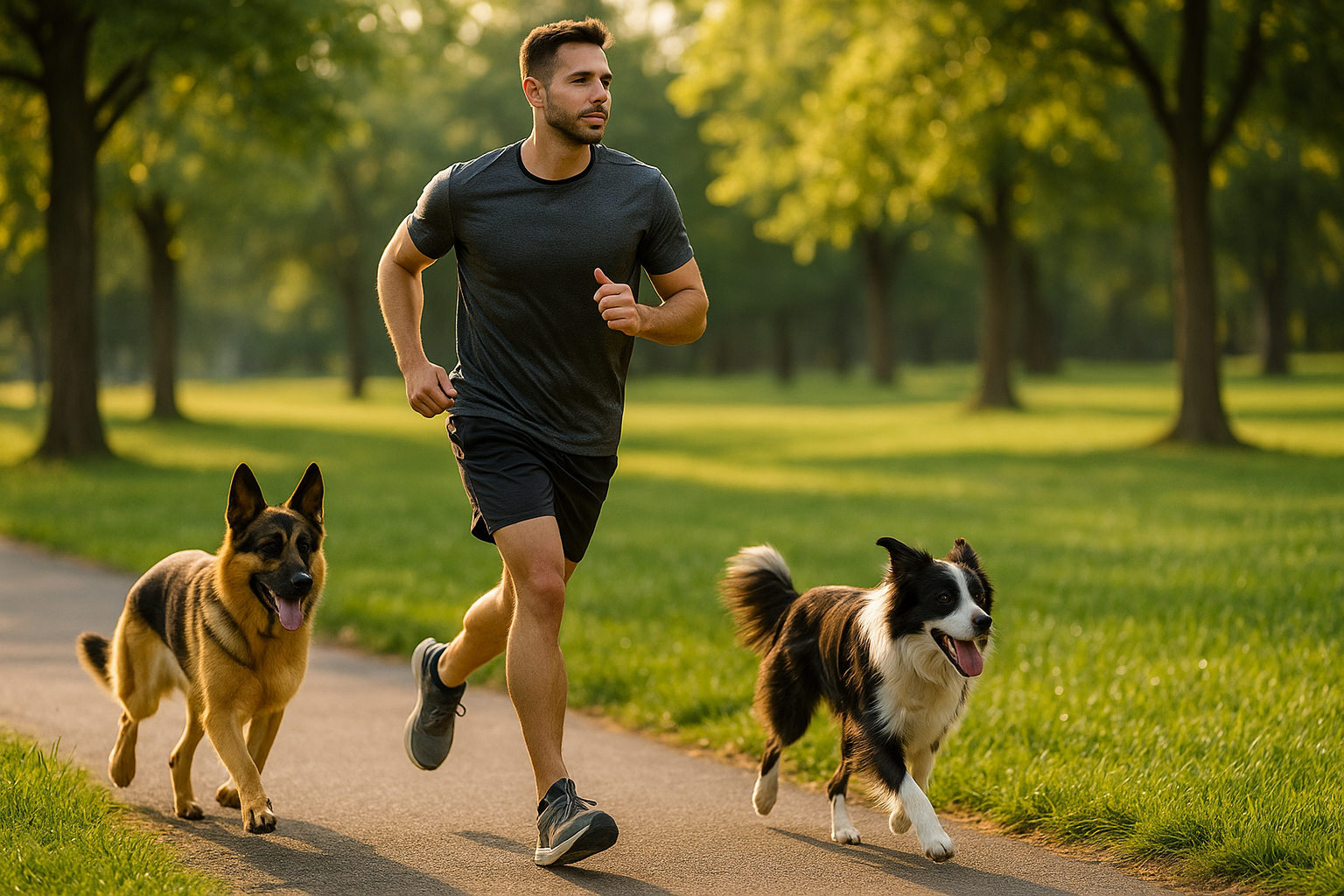Exercise vs. play (and why both matter)
-
Exercise = purposeful movement to burn energy and build fitness (walks, hikes, intervals, swimming, scent walks).
-
Play = fun, often toy-based activities (fetch, tug, puzzles).
Your dog thrives on both—but even on no-toy days, structured exercise keeps bodies healthy and minds calm.
Big benefits of daily movement
-
Physical health: supports healthy weight, cardiovascular fitness, joint lubrication, digestion, and sleep quality.
-
Behavior: reduces boredom and the urge to shred, bark, or dig; helps with impulse control.
-
Mental wellness: sniffing and exploring lower stress and build confidence (especially for nervous or reactive dogs).
How much exercise do dogs need?
General guidelines (adjust for your dog’s age, breed, and health—ask your vet if unsure):
-
Puppies: short, frequent outings; a rule of thumb is ~5 minutes per month of age (up to 2–3 sessions/day).
-
Adults (most breeds): 45–90 minutes/day split into 1–2 sessions; include a mix of cardio + sniffing.
-
High-energy/herding & sporting breeds: often 60–120 minutes/day with real mental work (sniffing, training, varied routes).
-
Seniors: lower-impact, shorter sessions (sniff walks, gentle hills, warmups/cooldowns).
Great exercise ideas that don’t require toys
Outdoors
-
Brisk “purpose” walk: 20–40 minutes with consistent pace and loose-leash skills.
-
Sniffari (decompression walk): slow route on a long line; let your dog read the “news” with their nose.
-
Intervals: 60–90 seconds brisk, 60 seconds easy; repeat 6–10 times.
-
Urban parkour: hop onto low curbs/benches, weave poles (trees), balance on logs—great body awareness.
-
Hiking or trail walks: varied terrain = natural strength & cardio.
-
Swimming or wading: low-impact conditioning for heat or joint sensitivity.
Indoors (rain, snow, or apartments)
-
Scent games: hide 5–10 pieces of kibble around one safe room; release to “Find it!”
-
Training circuits: 10–12 minutes of sit ↔ down ↔ stand, hand targets, spins, heelwork in place.
-
Stair reps (if safe): slow, controlled up & down 5–8 times with rests.
-
Canine conditioning: cookie stretches, controlled step-ups on a sturdy box, backing up 3–5 steps.
-
Treadmill walking: start slowly with harness and treats; keep sessions short and positive.
Safety checklist
-
Warm up/cool down: 3–5 minutes easy pace before/after.
-
Weather sense: test hot pavement with your hand; watch for heat/cold stress. Hydrate.
-
Surface care: mix grass, dirt, and sidewalk to avoid paw wear.
-
Growth plates & seniors: keep impact modest; favor sniffing, hills, water, and strength-balance drills.
-
Leash laws & recall: use a long line in open areas until recall is bomb-proof.
A simple weekly plan (plug-and-play)
-
Mon: 30-min brisk walk + 10-min training circuit
-
Tue: 20-min sniffari + 15-min hill or stair reps
-
Wed: 40-min neighborhood loop (include 6× 1-min intervals)
-
Thu: 25-min trail walk + 10-min scent games at home
-
Fri: 30-min brisk walk + 10-min urban parkour
-
Sat: 45-min hike or swim (low impact)
-
Sun: Recovery: 20-min easy sniff walk + gentle mobility
Where toys fit in (optional, but awesome)
Even when exercise is covered, toys amplify enrichment—puzzles for brain work, fetch for cardio, tug for teamwork, plush for comfort.
